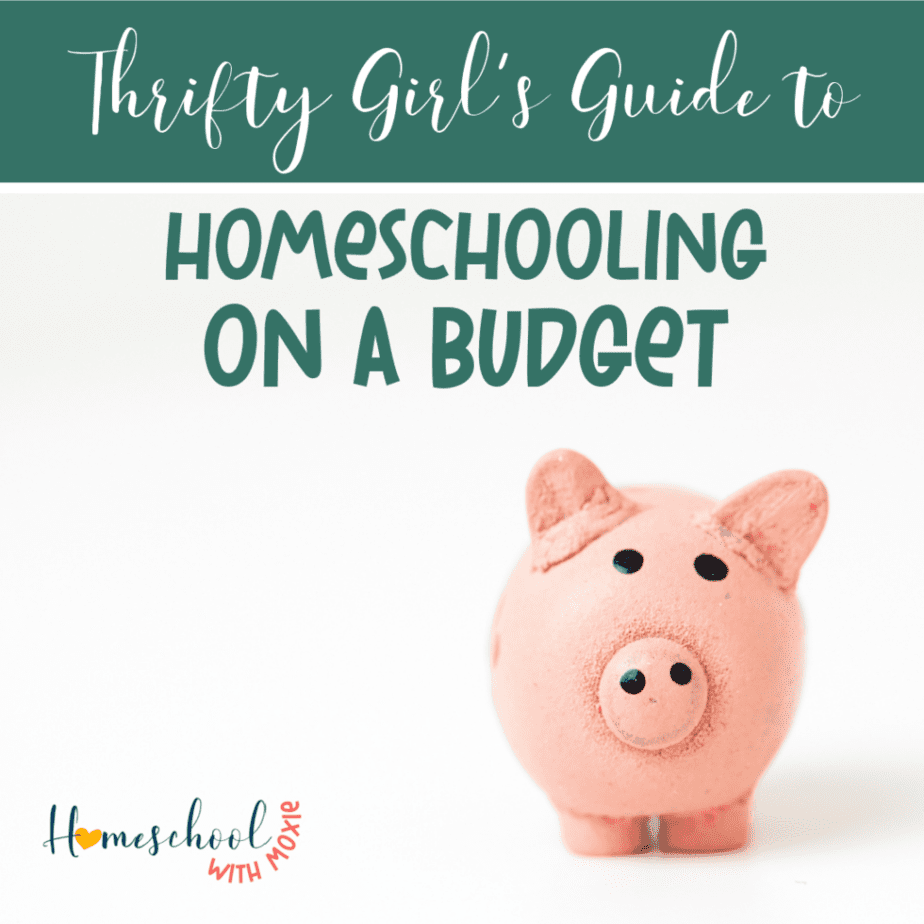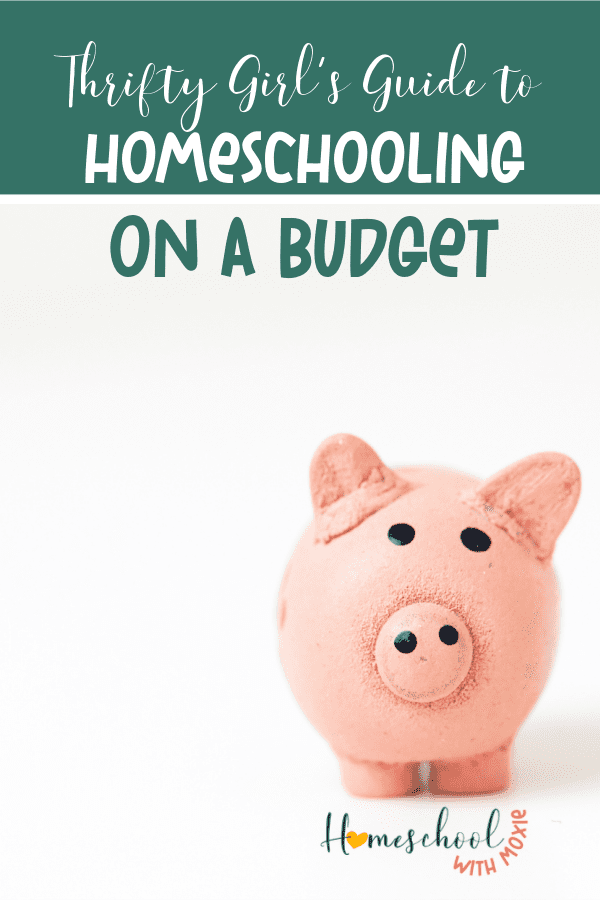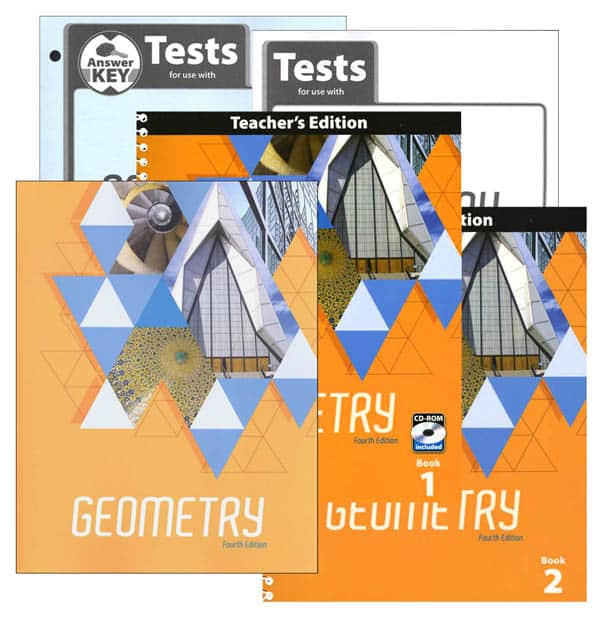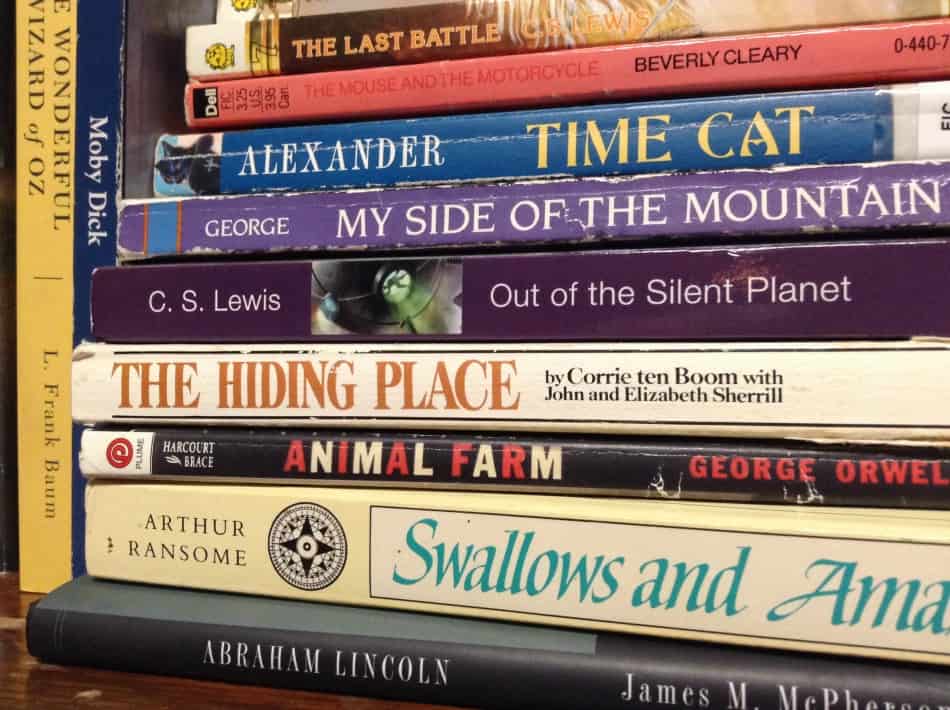Are you worried that homeschooling will break the bank? I’ll show you how to be successful homeschooling on a budget.
While this budget breakdown was from several years ago now, I think it will still be valuable to share. Because my homeschooling looks a lot different these days with only a couple kids left at home. So, when we were in the thick of it with every grade level represented, here’s how our curriculum budget looked.
I really love being able to share ideas with you because:
- we have five kids being homeschooled this year (2018)
- we are homeschooling all the levels – homeschool, middle school, elementary
- we operate on a one-income budget
If our family can homeschool five kids (even high school!) on a small budget, you can too!

My posts contain affiliate links for your convenience.
I purchased curriculum for grades K, 5, 8, 9 & 10 and only spent $510.98 for the 2018-2019 school year.
Homeschooling on a Budget
Yes, you could homeschool for free. But you could also spend upwards of $800+ per child for video courses. We landed somewhere in the middle. Sometimes you do get what you pay for, meaning that free is not always best. So sometimes it is worth it to pay a bit for the structure, outsourcing, and instruction help.
What we spent on Math
(Edited in 2023: This curriculum and budget overview was 5 years ago! Since then, we’ve switched to CTCMath for everyone in grades 7-12. With one low yearly fee for unlimited users in your family, we love CTCMath for its video lessons, self-grading assignments, and ease of use).
Here’s how the budget breakdown looks:
Math was biggest purchase this year. We use a traditional textbook approach to math and have used Bob Jones Press’ curriculum from K through high school. It works for us. And in the older grades, the texts are reusable. We tried the online course with instruction videos last year for 8th and 9th grade, but didn’t love it enough to justify the price tag ($299 each). So, we’re going to use free videos online for explaining the tough concepts.
However, we have found the BJUP math textbooks to be very user friendly with helpful and instructive examples. I always purchase the teacher’s edition for the middle school and high school courses so that I have the solutions for each problem. The kids can even self-diagnose their math errors using the teacher’s guide. It helps them toward more independence.
Our math purchases:
- 5th grade worktext $26.44
- Algebra I teacher book $71.31 & tests with answer keys $24.29
- Geometry kit (textbook, teacher book, tests with answer keys) $107.78
- kindergarten math worktext $22.90
Remaining Kindergarten Curriculum:
BJUP Beginnings worktext for Kindergarten was $30.93
Our Science Purchases
Physical Science (typically 9th grade) for my 9th & 10th grader:
- Textbook like new on eBay for $45 (compared to $67.50 new)
- Lab Manual and Teacher’s Edition Lab Manual $25.50 & $29.75
- Tests & answers $24.29
(edited in 2023: our go-to science is usually now Apologia and we can re-use the books)
High School History Purchases
We are using Notgrass American History for our 10th grader. The curriculum package (3 books) normally costs $110 new, but I found it on eBay for $78 in like-new condition.
The student review pack is $17.
The literature package normally costs $90 from the publisher, but instead we bought two books on eBay for $7.79, we have one book already, and the library has the other nine books that we will borrow when we need them. That’s a savings of $82.21!
How to Homeschool on a Small Budget
A few disclaimers.
First, “small budget” is a subjective term. What is small for one family might be huge for another.
Second, there is nothing wrong with spending much more than this on your family if you can afford it and you want to.
Third, when you’re just starting out with homeschooling, it can be easier to purchase boxed curriculum until you are comfortable making an eclectic plan. And some people never switch from the boxed curriculum, which is fine too! It is your family and you need to be confident in your choices.
But, if you don’t have a lot of wiggle room in the homeschool budget and you need to be thrifty about curriculum choices, here are some tips.
Create your year plan early enough to hit sales.
I created our plan for next school year (which starts in September) in February. So when I saw BJUP running a 15% off one-day sale in March, I had no guilt making that big purchase because I knew I was going to buy books from them anyway.
Look for curriculum on eBay.
When you enter a search term, you can choose to “save this search” and get alerts when new listings are available.
Check your library.
You don’t have to buy everything. I was originally going to purchase all twelve of the books needed for the American History course. But then I realized that if I planned ahead a bit, I could just borrow them from the library.
Combine multiple ages.
Until high school, my kids are never in a “grade specific” history or science. We all learn the same subjects and use one set of curriculum. Examples of books that have worked well for us in this way are the Mystery of History and God’s Design for Science.
Buy reusable curriculum.
We rarely use consumable products in our homeschool. I think the exception has been the elementary BJUP math worktexts. Once I make the purchase, I know that my four younger kids will be able to use the curriculum at some point. So that $100 biology package becomes $20 per year for each of my five kids. Actually, it will be even less than that because I will likely sell it at the end and recoup some additional funds. That brings us to the next tip.
Be ruthless about selling your old curriculum.
I know, I know. Curriculum is like an old friend. We have our bookshelves bursting with old but loved books. But if you don’t think you’ll use it in the future, or you bought it but it just wasn’t a good fit, allow yourself to let it go. Sell it and put the money toward new resources.
Decide which purchases are necessary and which purchases are wishful thinking.
This can go two ways.
First, are you being realistic in the time or effort that will be required to make a certain program work for you? Don’t purchase the bright and shiny resource just because all the homeschool moms are gloating about it. Will it fit your kids, your homeschool style, and your energy level as the mom?
Second, realize that many subjects can be taught without expensive resources. You could spend a couple hundred dollars on a fancy literature curriculum, or you could just nurture your child’s love of reading with frequent trips to the library and extensive free time for reading. You could spend most of your budget on that fancy kindergarten program, or you could look at a scope and sequence for kindergarten and teach it yourself.
Find free online resources.
Some parents go with a totally free online program like Easy Peasy, or one with a small monthly subscription fee like Acellus. While I don’t have personal experience using either of these, I’ve heard from many satisfied users. For almost any subject, you can find free online instructional videos. We plan to use Khan Academy to supplement our math textbooks for Algebra and Geometry this year. My high schoolers studying Physical Science will watch instructive YouTube videos similar to my Ultimate YouTube Playlist for World Geography.
Here’s how we’ve been able to afford to homeschool long-term
Has anyone ever said to you? “Wow, you’re lucky you can afford to homeschool.”
Why do people always assume only wealthy people can afford to homeschool? We’ve been a one-income family for our entire married lives and have managed to live well on one budget and homeschool successfully.
So on episode 202 of the Homeschool with Moxie Podcast, I’m answering the question: “What has enabled you to financially homeschool long-term?”
25 Things I Don’t Buy for My Homeschool – listen to episode 216
Need to stay on a tight budget for homeschooling? Here are the 25 things I don’t buy for my homeschool, which saves me money and space.
Instead, focus on the only 2 things you need to homeschool.
Here’s episode 216 of the Homeschool with Moxie Podcast:
More Help with Homeschool Planning
For additional information, check out these posts:
How to Plan Your Homeschool Year Like a Pro
Great Big List of Homeschool Resources
The Only 2 Things You Need to Start Homeschooling Tomorrow







